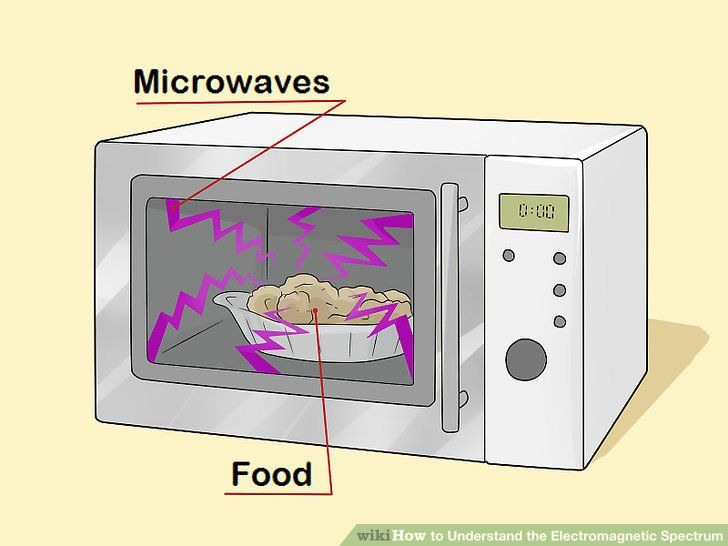
What Uses Microwaves? Exploring the Versatile Applications of Microwave Technology
Microwaves are a form of electromagnetic radiation with wavelengths ranging from about one meter to one millimeter. While commonly associated with heating food, the applications of microwaves extend far beyond the kitchen. From telecommunications to medical treatments, microwave technology plays a crucial role in various aspects of modern life. This article delves into the diverse applications of microwaves, exploring their use in communication, industry, medicine, and scientific research.
Microwaves in Communication
One of the most significant applications of microwaves is in communication. Their ability to penetrate the atmosphere with minimal interference makes them ideal for transmitting signals over long distances. Here’s a breakdown of their use in this sector:
- Satellite Communication: Satellites utilize microwaves to relay signals between ground stations. This is critical for television broadcasting, internet access, and global communication networks. The high frequencies allow for large bandwidths, enabling the transmission of vast amounts of data.
- Mobile Communication: Cellular networks rely on microwaves to transmit voice and data between mobile phones and base stations. The use of microwaves enables the creation of compact and efficient antennas.
- Radar Systems: Radar systems employ microwaves to detect the presence, location, and speed of objects. These systems are used in air traffic control, weather forecasting, and military applications.
- Wireless Networking: Wi-Fi networks use microwaves to transmit data wirelessly between devices such as computers, smartphones, and routers. The 2.4 GHz and 5 GHz bands are commonly used for Wi-Fi communication.
Industrial Applications of Microwaves
Beyond communication, microwaves are used extensively in various industrial processes. Their ability to generate heat efficiently and selectively makes them valuable in several applications:
- Microwave Ovens: The most well-known application is, of course, the microwave oven. It uses microwaves to heat food by causing water molecules within the food to vibrate, generating heat through dielectric heating.
- Industrial Drying: Microwaves are used for drying materials such as wood, ceramics, and textiles. The rapid and uniform heating provided by microwaves reduces drying time and improves product quality.
- Material Processing: Microwaves are employed in the processing of various materials, including polymers, ceramics, and composites. They can be used for sintering, curing, and joining materials.
- Sterilization: Microwaves can be used to sterilize medical instruments and other equipment. The heat generated by microwaves effectively kills bacteria and other microorganisms.
Microwaves in Medicine
The medical field also benefits from the unique properties of microwaves. They are used in diagnostic and therapeutic applications:
- Microwave Imaging: Microwave imaging is used for detecting tumors and other abnormalities in the body. It offers advantages over other imaging techniques, such as X-rays and MRI, in terms of cost and safety.
- Microwave Ablation: Microwave ablation is a minimally invasive technique used to treat tumors. Microwaves are used to heat and destroy cancerous tissue.
- Hyperthermia Treatment: Microwaves are used in hyperthermia treatment to heat cancerous cells, making them more susceptible to radiation and chemotherapy.
- Medical Diagnostics: Specific microwave frequencies can be used in diagnostic tools to analyze tissue composition and detect diseases.
Scientific Research and Microwaves
Microwaves are indispensable tools in scientific research, contributing to advancements in various fields:
- Spectroscopy: Microwave spectroscopy is used to study the structure and properties of molecules. By analyzing the absorption and emission of microwaves by molecules, scientists can gain insights into their energy levels and bonding characteristics.
- Plasma Research: Microwaves are used to generate and sustain plasmas, which are used in a variety of applications, including materials processing, fusion energy research, and lighting.
- Remote Sensing: Microwave remote sensing is used to study the Earth’s surface and atmosphere. Satellites equipped with microwave sensors can measure parameters such as soil moisture, sea surface temperature, and atmospheric conditions.
- Astronomy: Radio astronomy relies heavily on detecting microwaves and other radio waves from celestial objects. This allows astronomers to study the universe at wavelengths not visible to the human eye, revealing information about the composition and dynamics of galaxies, stars, and planets.
The Future of Microwave Technology
The development and application of microwave technology are continually evolving. Emerging trends include:
- 5G Technology: The rollout of 5G networks is heavily reliant on microwaves, specifically millimeter wave frequencies. This new technology promises significantly faster data speeds and lower latency, enabling new applications such as autonomous vehicles and virtual reality. [See also: The Impact of 5G on Wireless Communication]
- Advanced Radar Systems: New radar systems are being developed for applications such as autonomous driving, drone navigation, and security screening. These systems utilize advanced signal processing techniques to improve accuracy and reliability.
- Microwave Energy Transfer: Research is underway to develop systems for wireless power transfer using microwaves. This technology could be used to power electronic devices, charge electric vehicles, and transmit energy over long distances.
- Improved Medical Applications: Ongoing research is focused on developing more effective microwave-based diagnostic and therapeutic techniques. This includes improved imaging methods for early cancer detection and more precise ablation techniques for tumor treatment.
Safety Considerations
While microwaves offer numerous benefits, it is important to consider potential safety risks. Exposure to high levels of microwave radiation can be harmful to human health. However, the levels of radiation emitted by most devices that use microwaves, such as microwave ovens and cell phones, are generally considered safe. Regulatory agencies set standards and guidelines to ensure that these devices operate within safe limits. It’s always recommended to follow manufacturer’s instructions and guidelines to minimize any potential risks.
In conclusion, microwaves are a versatile and essential technology with a wide range of applications. From communication and industry to medicine and scientific research, microwaves play a critical role in modern society. As technology continues to advance, we can expect to see even more innovative uses of microwaves in the future.
